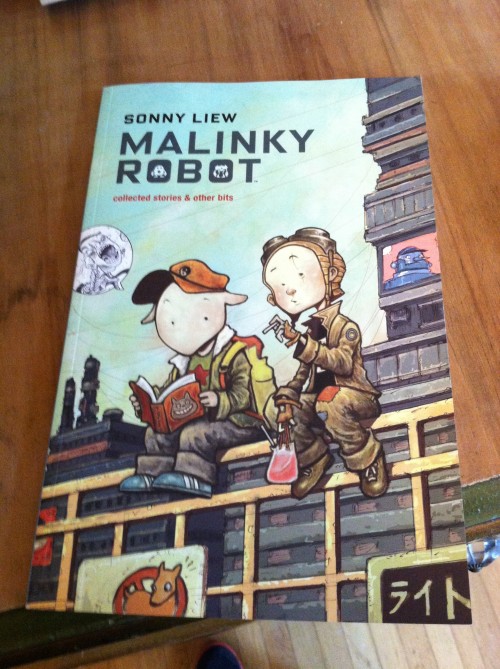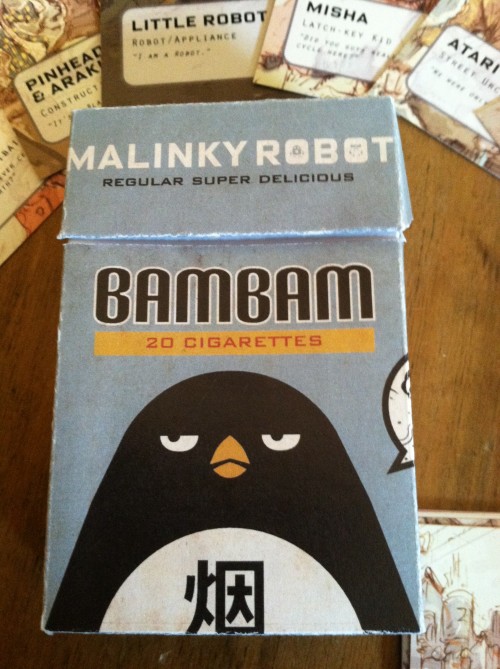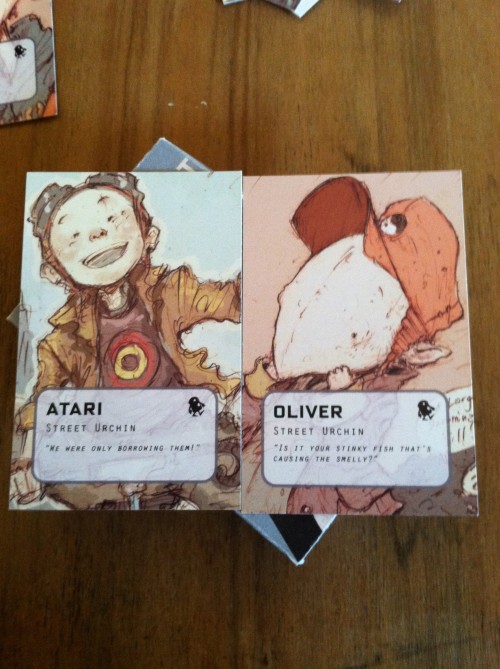I couldn’t get my hands on the lovely care package Sonny Liew sent me–which included a CD, playing cards in a cigarette pack, and a few other pieces of ephemera besides his first collection of Malinky Robot stories–not right away at least because my nine-year-old stepson intercepted it as soon as it arrived in the mail and wouldn’t part ways with it for a full week.
That right there might be all the review this collection needs. Comics have this weird a-demographic appeal where the mainest of mainstream titles are essentially designed to be read by anyone from ages 8-100. That is, they’re for everyone and no one. And yet these titles aren’t really grabbing young readers as easily as they once did, partly because of the death of the “spinner rack” which brought monthly comics to places like 7-11, Rite-Aid, and other places a kid could randomly stumble upon a comic outside of the directed mission of entering a comic book shop. Everyone, especially DC and Marvel, wants to bring these kids back to comics and everyone is relatively unsure how to do that. Is there some existing franchise that they love? Is there an art style that they respond to? The answer, at once simple and elusive: don’t try to write for kids.
As you may or may not know, kids have excellent bullshit detectors. They can tell when you’re dragging them somewhere YOU don’t even want to be. They can tell when you explain something but you don’t know what you’re talking about. They might not have the wherewithal to call you on it, but it smells funny (is this perhaps the “Stinky Fish” in chapter 1 of Malinky Robot?) And they can tell when someone is trying to speak in their tongue…and faking it. Again, they may not call you on it, but nor will they be enthusiastic.
That’s what makes those pre-code Disney/Warner cartoons so great and so enduring. When you strip away their fantastic premises, they’re just real: grim and emotional and messy. They don’t impart morals or pave worldviews. There’s characters contending with futility, schizophrenia, and, um, murder. There’s also smoking, innuendo, and other things that are going right over kids’ heads. And it works, because it’s always, always funny.
Functioning on this logic, Malinky Robot is at once aimless and perfected in its aimlessness. It follows a pair of boys, Oliver and Atari, in their subjectively thrilling adventures against boredom in a near-future Asian fishing town. First of all, hats of to Mr. Liew for giving his readers enough credit to suss out the sci-fi subtext without explicitly announcing the year, the place, or anything else that he clearly explains with the visuals. Because beneath the perennial theme of kids trying to entertain themselves, there’s a perfectly subtle pronouncement of the kind of semi-dystopian world we’re entering via our planet’s slow slide into eco-oblivion. It’s in the tones and dreariness with which he renders this decrepit yet utterly modern village. It’s even in the clothes that Atari and Oliver wear, and perhaps in their mutant hybrid species phenotypes as well. And so plots are centered around stinky fish and lost bicycles, around encounters with the people of this town like Mr. Bon Bon, an unhappy suit type who gets his own poignant chapter partway through the collection, and a robot, that… well… I don’t want to spoil that part.
All of this is to say that I get why my nine-year-old dug it. It’s because Malinky Robot rings true to his perspective without once condescending to it. It delineates a world like the one he shares with his friends where a new swear word can yield a whole day of laughs, where a smell can lead you on an all-consuming hunt for its source, and where the entire city that surrounds you is as inspiring and magnificent as it is mundane, stifling, and totally boring. Malinky Robot is a good book, maybe even a great book, because at long last, it’s a true book.


